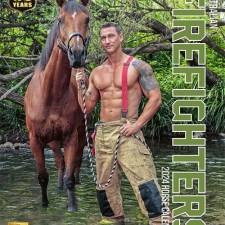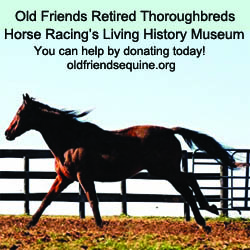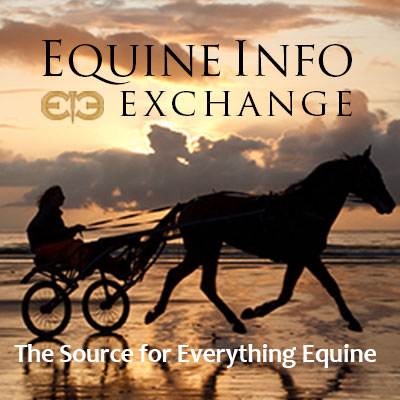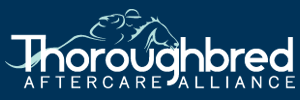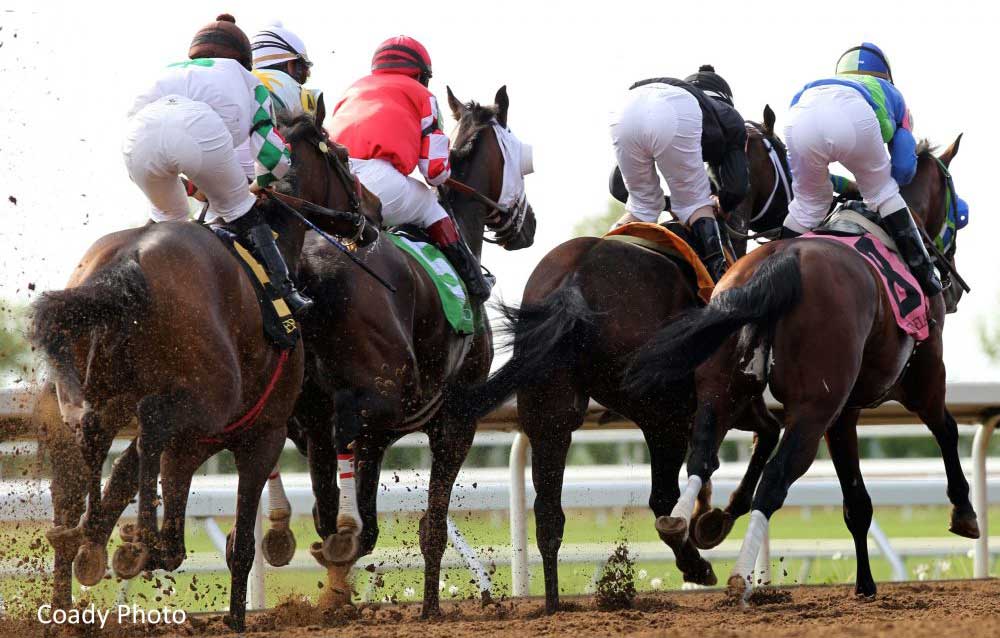
by Natalie Voss
It's easy to scroll through the Horse Care or Aftercare news sections on trade publication websites and feel pretty good about the state of Thoroughbred retirement and rehoming. It seems groups like the Thoroughbred Aftercare Alliance, Thoroughbred Incentive Program, Retired Racehorse Project, and a host of adoption and rehoming organizations are everywhere. With so many horses happily prancing around show rings and lazily nibbling grass in the paddocks of pensioners, the aftercare problem in racing must be nearly solved by now, right?
Those on the front lines of rescue and rehoming efforts say we're not even close—and we probably never will be.
For one thing, the scale of the problem is big. Bigger than most people probably realize.
Research on Australian racing populations indicates that roughly 40 percent of the racing population leaves the track each year. According to a study published in 2014 in the Australian Veterinary Journal, poor performance was the reason given for 36.5 percent of those retirements. Illness or injury accounted for another 30 percent. Ten percent of horses left because they were headed to the breeding shed.
Study authors said 6.3 percent of retiring Thoroughbreds entered the slaughter pipeline at the end of their career, while 16.4 percent continued on to second careers.
The Jockey Club does not keep figures on the number or percentage of horses retiring each season. Last year alone, there were 46,144 starters in the United States; if Australia's average is similar to America's, 40 percent of 46,144 would have 18,458 horses leaving the track by the end of 2018.
Looking back at the last decade of starters, 2009 to 2018, 40 percent of starters leaving the track each year would result in a total of 217,722 horses retiring.
Some portion of those leaving the track went to the breeding shed of course, and it's hard to know how many. However, since the number of horses bred has remained steady (or if anything, declined) in recent history, it seems unlikely the majority of roughly 18,000 retirees went on to breeding careers each season. Or if they did, there must have been just as unsettling an exodus of broodmares and stallions each year.
Then there are the horses who didn't make it to the track to begin with. On average, according to figures from The Jockey Club, 72 percent of registered foals born between 2005 and 2014 actually made it to the races, meaning 28 percent did not. There are many factors which determine whether or not a Thoroughbred will race; some are taken out of training before their first start if responsible trainers determine they're simply too slow to compete. Others may encounter injury (racing-related or not) or illness before they have the chance.
Depending on the horse's connections and the reasons it never ran, this doesn't always spell uncertainty for the horse. Many sport horse riders prefer horses with little or no racing background because they believe it reduces the potential for lurking injuries, and plenty of owners are now making retirement decisions early to allow their horses an easier time finding a new job. Breeders may take a well-pedigreed filly out of training and put her into their program, especially if she's a homebred. There are other, less savory possibilities, too – horses, especially young horses who may have minimal training, can end up in the slaughter pipeline or given away, increasing the risk for ending up in neglect situations. Horses in that scenario are virtually impossible to identify if they aren't yet registered and have no tattoo or microchip.
Unfortunately, The Jockey Club does not keep reports on horses' location and use year to year (other countries, like Australia, do track horses for several years after they last ran, though recent controversy there could suggest doubt about how well they're doing it). It's impossible to know how many of these non-starters found suitable alternate careers and how many simply vanished.
Still, there are an awful lot of non-starters that had to go somewhere when racing wasn't an option. Assuming 28 percent of registered horses from the foal crop of 2016 never ran, that means this year's 3-year-olds had 5,887 pasture mates that never made it to the races. For the past ten foal crops, the 28 percent rate would mean roughly 72,297 horses were registered but never made it to the track.
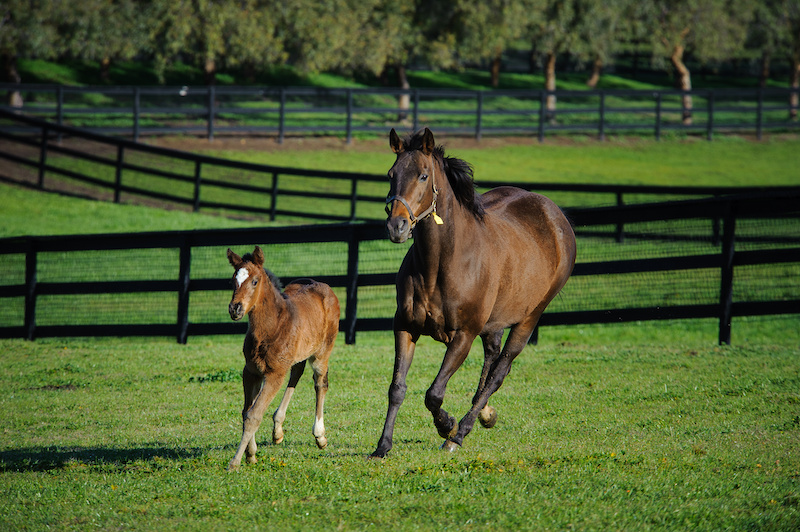
On the question of those registrations, there tends to be a discrepancy between the number of live foals reported to The Jockey Club each year and the number registered. In the 2016 foal crop, for example, a press release from the breed registry predicted it would see a total of 22,500 live foal reports by the end of the year, but the number of horses actually registered for that foaling season was only 21,024, leaving 1,476 unregistered. Foals aren't required to be registered for several months after birth. As with non-starters, there are many reasons a breeder may elect not to register a horse, especially in case of illness, injury, or untimely death. But those decisions are being made while the horse is especially young, and the market for a non-papered, unstarted horse who may have physical baggage is a narrow one.
How are aftercare non-profits handling this sea of horses who can no longer do the job they were created for?
Since the Thoroughbred Aftercare Alliance launched in 2012, 10,300 horses have been helped by accredited facilities. CANTER, which both networks horses on behalf of racing trainers and takes on a limited number of horses for retraining, has served 25,000 horses since its foundation in 1998. Long-standing groups like New Vocations have also racked up some impressive numbers since their foundation, which predates the TAA; New Vocations has placed 6,000 horses since it was founded in the early 1990s, though that number includes both Thoroughbreds and Standardbreds.
The Jockey Club's Thoroughbred Incentive Program (T.I.P.) has seen 41,500 OTTBs competing in its classes, so at least that many are in sport and pleasure riding homes.
Those figures are impressive, especially given how new some of those programs are, but those inside them say they know it's not enough.
“One of the changes we're seeing is that people are doing many more pre-purchase exams than they used to,” said Susanna Thomas, executive director of the Maker's Mark Secretariat Center. “Why? Because they have tremendous choice. Why? Because there are many more accredited organizations and there are tons of people doing it for profit. Hooray!
“But even if you add it up, all the horses adopted out, all the horses sold by professionals — how many horses do you think that would be? If you look at scale, it's chump change.”
Those in the non-profit aftercare world say the infrastructure to help OTTBs has grown enormously in the past decade; now, their problem is finding the funding.
Part of the TAA's original mission when it was founded in 2012 was not only to accredit aftercare charities but also to help fund them. In 2015, TAA distributed $2.4 million to 56 accredited charities. This year, the organization gave out $3.42 million. The number of accredited organizations has also increased in that time, however — there are now 74 accredited charities – so the amount available to each has remained relatively unchanged.
While TAA organizations all agree they are incredibly grateful for the help, many also say they're unable to survive on TAA grants alone. A sampling of TAA recipients' recent tax returns revealed that TAA grants made up, on average, just 18 percent of the organizations' total revenue for the year. This means they're still scraping for fundraising dollars, only now they have more competition – from other organizations and from the TAA itself.
TAA President John Phillips said the organization has come a long way in its ability to raise money.
“Initially I think the battle for those who were concerned about this issue was to encourage or persuade other people within the industry that this was a make-or-break issue,” said Phillips. “I think that's essentially gone away. I think now the industry understands we have to fund it, and there's no question about the necessity to address the issue; the question is how to keep that funding process fair to all components.”
Stallion owners are required to pay $25 when they report a mare bred, and a breeder registering a foal has to pay another $25 at the time of registration to the TAA. Auction houses can and do make voluntary contributions to the TAA. Consignors and purchasers at public auction have the option to contribute a percentage of a horse's purchase price to the organization, and some tracks see those participation numbers get higher.
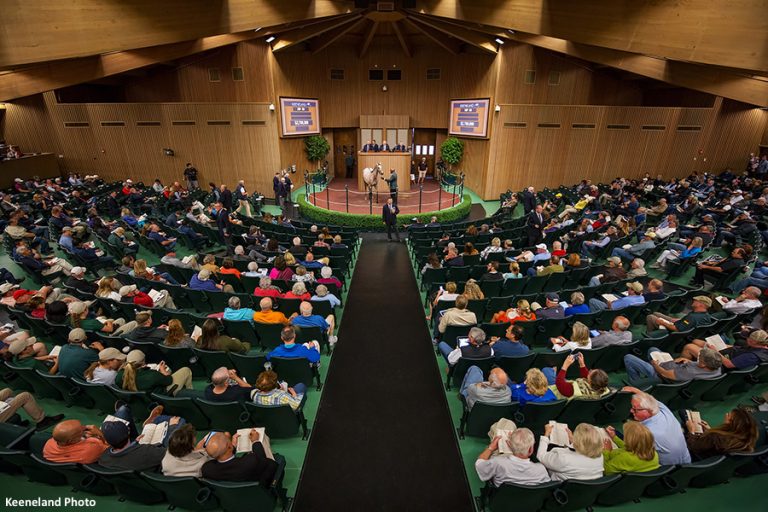
About 40 to 50 percent of consignors and buyers opt to give a percentage of a horse's purchase to aftercare. The TAA lists 14 racetracks or track ownership groups that donate to aftercare.
“The problem continues to be everybody points to everybody else and says 'He needs to contribute more,'” said Phillips. “That's human nature and that's probably always going to be a challenge to find out what's the proper balance. But we're making progress. We need to make more progress because we have 160 accredited facilities in this country and Canada with about 74 organizations. The demand for supplementary funding of those organizations has outstripped our growth in the funding process. We need to catch the funding up.”
Outside of TAA, California owners do fund aftercare in an automatic deduction, and New York also requires mandatory fees associated with starts and claim prices to go to aftercare. The California Retirement Management Account is an opt-out program, meaning owners can choose to opt out of giving .03 percent of purse money won to the organization.
The wrong type of horse
The other difficulty facing many aftercare groups now is also the type of horse they're being asked to help. To understand this problem, it helps to think about OTTBs like human beings looking for work. Like a person on the job market, a horse has a better chance of finding a job if he is qualified to do many different things – in terms of his physical condition (soundness and good conformation), his mental condition (willingness and aptitude for learning), and his experience (ground manners and any skills he has learned under saddle).
Thanks to marketing efforts over the past decade, there is now a viable marketplace for the most employable horses – sound, sane, and ready to begin training in something new. Programs like the Retired Racehorse Project and many for-profit retraining businesses add to the skillset of an off-track horse, raise his value further, and make him even more employable.
But horses that come with limits – soundness issues, poor conformation, behavioral issues, or age challenges – are more difficult to employ. They require more time to find homes, have a narrower range of potential homes to pick from, and have less economic value. They also cost retraining and rehoming facilities more money.
“What we have seen is in 2010 we started taking on more horses that needed to be rehabilitated prior to us adopting them out,” said Anna Ford, New Vocations executive director. “We saw that trend when social media picked up because what was happening and what's continued to happen, is that there's more ways for people who have a sound horse to retire to get them out to the public and get them a home. One thing that has not changed in the last 27 years is if we get a perfectly healthy, sound horse, we can have it a home in a week. What has changed is we're getting hardly any of those horses anymore.”
For horses that don't leave in a week, Ford said the average cost for housing and feed each month is $500 to $600. Training adds another $150 to $200. That's probably after $100 to $300 of veterinary work to diagnose any lingering issues. Most adoption fees at New Vocations are under $1,000.
“For a long time people thought we were making money off horses,” said Ford. “When people donate a horse to the program they really do need to send a donation with it, whether it's us or any other program, because it costs money to provide them with the proper services to give them a proper home.”
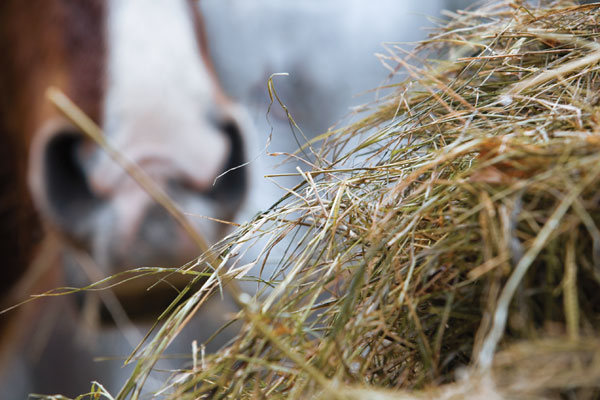
Costs vary by region; at RACE Fund in the Northeast, which supports both retired sanctuary horses and adoptable horses, costs are around $300 to $400 per month for pensioners.
Many retraining and rehoming facilities find themselves in a tough spot with weanlings or greenbroke yearlings or 2-year-olds that never make it to the starting gate. Those horses require more expertise to give them the same skills of their older counterparts, who come off the racetrack already able to be ridden at a walk, trot, canter, load in a trailer, stand for baths and farrier visits, etc. Adoption organizations are also forced to wait for the horse to age before they can find a home for him.
“Second Stride does get in yearlings and even on rare occasion weanlings or pregnant mares,” said Second Stride founder Kim Smith. “We are equipped to get them professionally foaled out, broke to halter, lead, saddle, and going. Interestingly enough these horses tend to stick around and take even longer than an injured OTTB to find a home. I would not have thought that. I assume it is because most sport disciplines don't allow them to show until [they are] over 3 years old. So people are slow to commit, and/or feel they [don't] have the skills to bring along a youngster.”
Ironically, Smith said, an unraced young horse with 30 days of basic training is probably a better match for the average amateur rider because they never learned to gallop.
“There is just often a stigma about young horses being green and difficult to ride, which is really not always true,” she said. “They are clean slates.”
Smith suspects she would get in more unraced horses if people knew that calling Second Stride was an option. Most other aftercare organizations are hesitant or unable to take unbroke youngsters, so she believes many breeders assume a rehoming facility isn't an option for them.
Adoption organizations run into the same types of issues with retired broodmares. Although they were ridden regularly at one point in their lives, those in production likely haven't been under saddle in years.
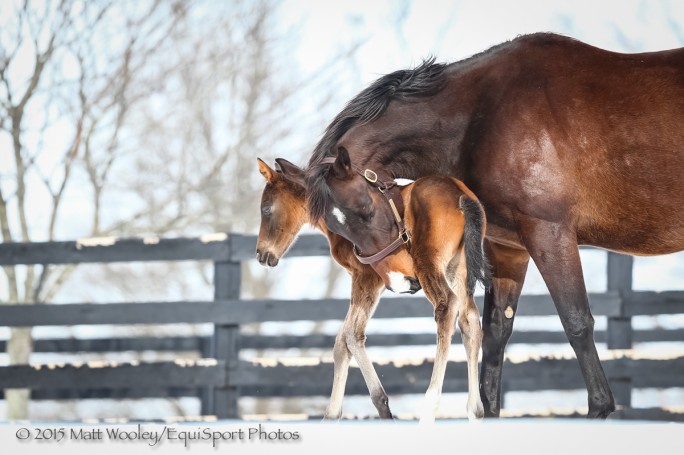
“Even a sound mare is hard to move,” said Thomas. “What about a barren mare? You have to rebreak them. Over time, they get the little pooch, the little swayback, the lip is a little droopy. I'm sorry, but pretty sells. Ugly doesn't. As you look forward to where we need to be, the broodmares are really a problem.”
Smith echoed Thomas's concerns.
“I honestly think there is a huge need,” she said. “And I think many of the low end or no bid horses at the sales would not go to the sales if the breeders knew of this option. I feel they likely just don't know what to do with them. Entering the sale costs a few thousand dollars by the time you van them, prep them and pay sale and consigner fees. So obviously selling for under $6,000 even if you had a free stud fee would not cover those costs.”
The outlet no one wants to think about
There is one place a horse always has economic value, even if he's not all that employable – a slaughterhouse.
Unfortunately, there isn't data about how many Thoroughbreds may end up being exported to Canada or Mexico for slaughter. The U.S. Department of Agriculture does keep tabs on the number of horses being exported for the purpose of slaughter and records their ages and genders, but it doesn't attempt to establish the breed of those horses.
USDA figures suggest the total number of horses exported for slaughter has decreased significantly in recent years. In 2012, the USDA showed 55,811 horses exported for slaughter to Canada and 125,518 to Mexico. By 2017, those numbers were 12,273 and 52,555 respectively.
Thoroughbreds primarily enter the slaughter pipeline one of two ways: they may be brought to a livestock auction frequented by slaughterhouse contractors looking to fill their trucks, or they may be sent “direct ship.” This means a horse's owner has sold the horse to the kill buyer privately with the condition it not be made available for resale or rescue anywhere – likely to shield the trainer from detection by tracks with anti-slaughter policies.
Then there are kill pen bail businesses, which may serve as supplemental income for owners of livestock auction houses or may be the primary business for individual horse traders. The owner of the horse posts pictures and video to social media, makes a plea for the horse's rehoming, and sets a “bail price” that will release the horse from the sale or trader's possession. Bail prices are often significantly higher than the per-pound prices offered by slaughter facilities in Mexico or Canada (which are usually in the range of $400 to $600), but social media users and rescues will crowd-source the fee anyway, and then find the horse a home afterward.
There is some debate about the likelihood of these bail businesses shipping a horse to slaughter since it will always fetch more via social media sale with very little cost. It's also unclear how many of the horses featured on Facebook pages of bail businesses were sought out exclusively for that purpose and were never at risk of shipping to slaughter.
OTTB rescues have differing opinions as to how many of the horses exported for slaughter each year are Thoroughbreds. Some advocates who spoke with the Paulick Report said they believe fewer horses are entering the slaughter pipeline; others, who keep an eye on one or two nearby livestock auctions, said they see one or more Thoroughbreds each week, just like they did before aftercare became a hot topic.
One thing everyone agrees upon – it costs more to get a Thoroughbred out of the slaughter pipeline than it does to retrain and rehome one that comes straight off the track. The kill pen or bail business must be paid for the horse, and the horse will likely require quarantine and basic vet care due to biosecurity concerns. One non-profit told the Paulick Report it costs the group two to three times more to take in a slaughter pipeline horse compared to a horse directly from the track or farm.
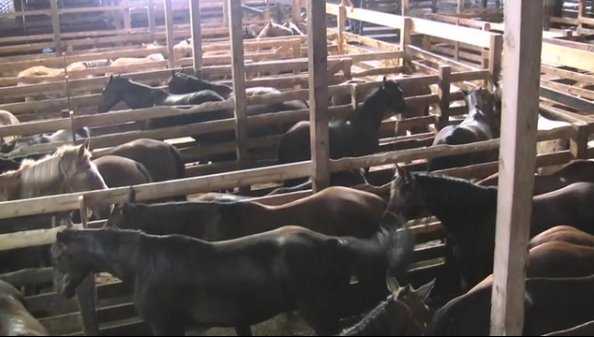
Louisiana has had an especially poor reputation when it comes to OTTBs and slaughter. Victoria Keith, co-founder of the National Thoroughbred Welfare Organization (NTWO), said that since NTWO's creation, she believes there are fewer OTTBs at livestock auctions in that state.
“The good news is that it has slowed way down in Louisiana,” Keith said. “I'm very happy about that. I know there have been some that have gotten by us but for the most part you're not seeing them every week anymore.
“Everyone was surprised when people turned over horses [to NTWO for free]. I've been told by some people down there that we're seeing the mindset change very quickly. I always had faith that if people had another option they'd take it.”
Kelly Smith, founder of Omega Horse Rescue, said she's seen a decline in Thoroughbreds in her line of work. Omega works to purchase horses from livestock auctions near its Pennsylvania base and from a kill buyer's private pen (Smith has vetted the buyer and determined he has active contracts with horse meat companies in Canada and Mexico). But she cautions the size of the problem is still enormous, particularly when you consider the number of retired broodmares and stallions who also find their way to auctions and kill pens.
“I've seen improvements in that area but they're still ending up there,” she said.
Rescue burnout
It's hard to be on the front lines of the slaughter pipeline, Kelly Smith admits.
Although it's well-known inside the world of animal rescue that it is a high-burnout business, many people on the outside may not realize it. A 2017 study published in the Academy of Management Journal found the burnout rate among those working in animal shelters was about two thirds. Caring for animals is physically and emotionally taxing, and those working with horses have particularly long hours. Add to this the financial uncertainty, and what seems like an endless march of displaced, sometimes-sore, usually-frightened horses week after week.
Nearly every retraining and adoption group told the Paulick Report they have wait lists of horses needing stalls and paddock space.
“Anybody involved in animal welfare has a really stressful job,” Smith said. “Especially when you see a pen full of a hundred or more horses and you know you may be able to help one or two.”
This article originally appeared on Paulick Report and is published here with permission.
Find more relevant articles in our section on Retire & Rehome.










